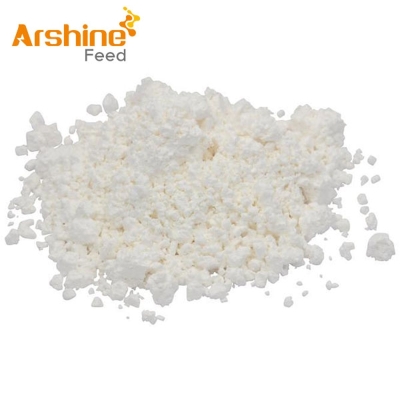Changes in soybean meal production and market in China (12.5)
-
Last Update: 2003-03-12
-
Source: Internet
-
Author: User
Search more information of high quality chemicals, good prices and reliable suppliers, visit
www.echemi.com
OA show ('918 '); in the early 1990s, with the rapid growth of domestic soybean oil demand and the rapid development of feed industry, the growth rate of China's soybean pressing quantity is also accelerated, and the soybean meal output is significantly increased every year In 1990, the output of soybean meal exceeded 4 million tons, and in 1993, the output of soybean meal exceeded 6 million tons One year later, the soybean meal output reached 7 million tons Since then, due to the slow development of domestic oil industry and feed industry, soybean meal production has been hovering Until 1998, due to the obvious increase of soybean import, the total output of soybean meal in China was only more than 8 million tons So far, the domestic soybean processing and soybean meal production scale has entered a rapid development stage In 1999, the total output of soybean meal in China reached the level of 9 million tons for the first time, an increase of 1 million tons compared with the previous year Among them, the output of soybean meal in Heilongjiang, Shandong and Jiangsu were close to 1.7 million tons, 1.6 million tons and 1.9 million tons, respectively The output of soybean meal in three provinces accounted for 58% of the total output of China In 2000, China's soybean meal production is still growing, and the output is expected to be close to 12.5 million tons The soybean meal production in the coastal areas of East China is expanding rapidly in East China The soybean processing capacity of Shandong, Jiangsu and other provinces has been greatly improved since the mid-1990s Meanwhile, the soybean meal production in this area is also increasing rapidly East China is one of the main soybean meal consumption areas in China Now these areas have become the main areas of soybean processing and soybean meal production This is a fundamental change from the situation that the northeast and North China play a leading role in relevant production before the mid-1990s One of the important reasons for this change is the rapid increase of soybean imports Before the mid-1990s, China was a net exporter of soybean, so the main soybean producing areas in China, namely northeast and North China, were the main producing areas of soybean meal After 1995, with the construction of soybean processing plants in the eastern coastal areas, especially the expansion of joint-venture oil extraction plants and processing scale, soybean imports began to grow, and China soon turned into a net soybean importer These areas mainly include Shandong, Jiangsu, Tianjin, Dalian and Yingkou in Liaoning As the oil yield and supply stability of imported soybeans are better than those of domestic soybeans, most of the soybean processing plants in the eastern coastal areas use imported soybeans as raw materials In this way, the layout of soybean processing and soybean meal production in China has changed significantly In the early 1990s, the annual output of soybean meal in Northeast and North China accounted for about 70% of the total output of the country By 1999, it had dropped to 50% Soybean meal production in South China is also growing rapidly Since China strengthened its efforts to crack down on the smuggling of refined oil in 1998, the number of oil mills in South China is increasing, which may affect the monopoly of soybean meal market in Shandong, northeast and other provinces in South China and Jiangxi, Hunan and other provinces The output of soybean meal with imported soybean as raw material is growing rapidly These new output is more distributed in East China and South China, while the delivery warehouse of domestic soybean meal futures trading is more distributed in Northeast China, which will affect the normal development of soybean meal futures trading The growth of soybean meal consumption can fundamentally affect the consumption of soybean meal due to the development of domestic feed and feeding industry Since the 1990s, the total consumption of soybean meal in China has increased year by year However, due to the uneven development of feed and feeding industry, there are also differences in the growth rate of soybean meal consumption between the years In 1992, the annual consumption of soybean meal in China reached 4 million tons for the first time, and in 1993 it was close to 5.5 million tons Since then, the consumption of soybean meal has increased at the rate of more than 1 million tons per year In 1996, the total consumption of soybean meal in China was nearly 9 million tons After 1997, the growth rate of soybean meal consumption slowed down obviously Until 1999, the total consumption was only over 10 million tons It is estimated that the total consumption of soybean meal in China will reach 11.5 million tons in 2000 PHM (author:)
This article is an English version of an article which is originally in the Chinese language on echemi.com and is provided for information purposes only.
This website makes no representation or warranty of any kind, either expressed or implied, as to the accuracy, completeness ownership or reliability of
the article or any translations thereof. If you have any concerns or complaints relating to the article, please send an email, providing a detailed
description of the concern or complaint, to
service@echemi.com. A staff member will contact you within 5 working days. Once verified, infringing content
will be removed immediately.







